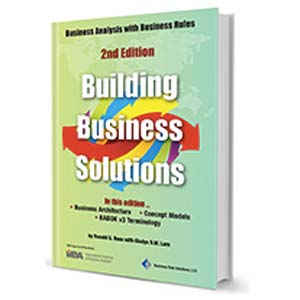Business Process Management: The Heart of Organizational Capability
Traceability From Strategic Intent to Capability
Today any organization must be cognizant of what is happening in the world around it and recognize the drivers that will affect its future business viability and performance. If it is paying attention, it will be aware of the social, technological, economic, environmental, and political changes in its business landscape and will also see threats and opportunities. Based upon these factors, its current and anticipated performance, and an understanding of the fit with its current capabilities, it will renew its strategic intent and reexamine its market and capabilities to plan modifications.
Key aspects of this examination will be the nature of its products and services as well as its relationships with its customers and other stakeholders. Gaps or anticipated future gaps will have to be actioned. New products and services and the desire to maintain or improve the health of its relationships with its stakeholders will require a periodic examination of its capabilities, since realizing the desired future state will not happen just by declaring a vision of it.
Process as the Core of Capability
A challenge in any analysis and design is to find optimum ways to organize the thinking and documentation of the aspects being studied. Recently, process-centric approaches have proven to be the best organizers of the knowledge required to describe how capability must change. Of all the means, process is the only option when it comes to directly connecting capabilities to the strategic intent and the stakeholders of the business.
Only processes can be measured in terms of business outcomes. People, facilities, and technologies are not directly tied to outcomes of value for those stakeholders that care about what we do and what we produce. Process is unique in that regard. In addition, processes can be measured directly and their results can become a key part of a balanced scorecard measurement system for the organization or can provide contributing and leading indicators of future business performance.
Consequently, process makes the perfect organizer of business requirements. It shows the transformation of inputs into outputs. It defines the triggering events to which the business must respond, as well as the criteria required for closure. It shows who cares and the role that stakeholders must play. It defines the guidance needed to carry out the process and attain the required outcomes. It defines the needed physical capability required from people, technology, and facilities in order to succeed. It defines the required measurement system and performance targets to establish assessment of business, as well as human performance and evaluation systems. It provides the opportunity to learn and share the knowledge gained for further improvement and for best practices. Based on this understanding, knowledge, business rules, and technology requirements will have full traceability back to business drivers.
Viewing process in this manner also now provides you with the ability to normalize the knowledge about your capabilities,, i.e., your reusable assets, and organize it in ways that allows each type to be managed and changed more easily.
Components and Ease of Change
The history of the development of professional information management practices has shown a continuous (if sometimes painfully slow) progression in untangling the set of logical building blocks from one another and making them more modular and reusable. With these intermingled, the myriad of dependencies of one against the other makes it almost impossible to deliver requirements and solutions due to the complexity of understanding the problem. The development of the Zachman Framework was a major contributor to simplifying this thinking. Its separation of the What?, How?, Where?, Who?, When?, and the Why? has provided many organizations with a consistent way to structure, store, and explain the enterprise that has paid off in better business and IT architectures, as well as faster time to define requirements and deliver software solutions.
But, in addition to separating key knowledge about enterprise assets from one another, you must also know how they affect or interact with one another. For example, different decisions on 'Where' can affect your choices of 'Who' and 'How'. Perhaps the location of your product development center will determine who is available to do R&D and therefore the process of globalizing the product line. Also, the availability of skilled human resources will affect your ability to deliver new technologies. Despite the requirement to normalize Zachman cells and keep them pure, we must also have methods for determining the right things to put in them that are tied to strategic intent -- the 'Why'.
Another example of the value of independent variables was the development of data modeling and normalization. This idea meant that data could be managed separately and reused as an asset since it was not embedded in procedural code. It did not mean that process and data did not have to cross relate. Clearly each process or application component had to know which data to act on. Likewise, the advent of workflow management systems allowed processing components to be invoked based on conditions managed outside of computer programs. It allowed users to change the flow quickly from outside the programs themselves.
An example of the cost of not having independent variables and a knowledge of their locations is the trillions of dollars spent on 'Year 2000' software changes simply because the structure of dates was deeply imbedded in the data processing code of old software paradigms. The cost of change was exorbitant and provided little business value added. Would it not have been nice to change all of the date definitions in one place once and simply re-execute applications?
These are just a few examples of the challenge to isolate and manage the stable components of business separately from the unstable. The proven benefit to date is ease of understanding, reduced complexity, and lowered expense and demand for resources that are in short supply.
The next wave of this evolution is enabled by taking a process-based approach. By doing this, the separate components of the solution requirements can be defined. By separating rules from process models, the business processes take on a remarkable degree of stability. Rules can be maintained without digging into the other components so long as you know which processes use which rules. The challenge we now face is to keep all of these independently-managed yet highly interdependent factors in synch. By taking an approach that maintains the independent variables in their own domains and sees their interconnections as a domain in its own right (also to be managed independently), we can achieve ease of change.
An Examination of Capability
For convenience, I have organized capabilities into three major categories:
- Process Capability representing the organization's ability to get work
done, delivering results to the satisfaction of the stakeholders,
- Process Enabling Capability synthesizing the capability to provide sufficient
capable reusable resources so the process can achieve its purpose, and
- Process Guidance Capability so that the process can do what is right or what is required in the best way.
Process Capability provides:
- Ways of working, transformation activities, workflows, and delivering results to stakeholders. Guiding and enabling capabilities are used by it; they are kept separate but cross referenced to where each is used, and
- Process stability regardless of changes in organization structure, roles, or even technology.
Process capability will align all of the other capabilities, keeping them in line and focused on the end objective.
Process Enabling Capability provides:
- Physical Facilities, including buildings, plant, equipment, and other physical assets,
- Information Technologies, including applications, databases, networks, and related infrastructure, and
- Human Resources, including the skills, competencies, motivations, and capacities of staff, partners, and contractors.
Clearly without these resources allocated in an effective and efficient manner, processes fail, stakeholders are disappointed, and business performance will suffer.
Process Guidance Capability provides:
- Lessons Learned from experience or direct stakeholder feedback as a part of the execution of the processes themselves. This guidance has relevance if it is respected, heeded, and shared and turned into other guidance and enhancement of the processes and their enablers,
- Knowledge Capability, including guidance available to govern, direct, control, or influence human and technological action, including access to knowledge sources,
- Techniques for Process Execution, including reference documentation, procedure guides, training materials, websites, and best practices, and
- Business Rules representing formalized constraints and algorithms to be applied to associated events and conditions of the data and process workflows.
Clearly, processes without appropriate, relevant, and current guidance will not perform to the expectations of the organizations stakeholders.
It is apparent that there are many things that you have to get right if you wish to have a successful business, and there are many things that can go wrong to prevent you from doing so.
Conclusion
The required capabilities of the organization fall into many types, ranging from very physical to highly intellectual. All of these capabilities will be potentially affected in order for the 'Organization in Focus' to attain its strategic intent. Programs and projects are the typical vehicles that realign these capabilities with the purpose of the organization. Any breaks in this alignment will mean that whatever changes are being worked on will not be traceable to strategic intent and later business performance will suffer.
# # #
About our Contributor:
Online Interactive Training Series
In response to a great many requests, Business Rule Solutions now offers at-a-distance learning options. No travel, no backlogs, no hassles. Same great instructors, but with schedules, content and pricing designed to meet the special needs of busy professionals.











How to Define Business Terms in Plain English: A Primer
How to Use DecisionSpeak™ and Question Charts (Q-Charts™)
Decision Tables - A Primer: How to Use TableSpeak™
Tabulation of Lists in RuleSpeak®: A Primer - Using "The Following" Clause
Business Agility Manifesto
Business Rules Manifesto
Business Motivation Model
Decision Vocabulary
[Download]
[Download]
Semantics of Business Vocabulary and Business Rules